New publications
John Keess, "Canada’s Long-Term Strategic Limitations: Technology and Strategic Choice in Defence Debates, 1887-1959", Scientia Canadensis, June 2024.
In surveys of Canadian military history, decisions on force design — which involves choosing between investments in different military technologies — are usually framed in the political criteria of sacrificing or preserving Canadian sovereignty. This article argues that Canadian strategic choice is not shaped by either politics or technology, but by the relationship between military technology and Canadian geography. The relationship between these factors provides a strategic context which then shapes the choices open to policy-makers. These contexts reflect two modes: those where there is a direct military threat to Canadian security and those where there is a relative one. The article employs three case studies, debates on Canadian naval policy (1887-1918), changing approaches to defence cooperation with the United States between 1918 and 1945, and debates on Canadian air defence in the early Cold War (1945-1959), to examine how decision-makers understood and acted on absolute threats and the technologies which underwrote them.
Caroline D'Amours, Hannah Young, and Catherine Mavriplis, The Chairs for Women in Science and Engineering Program, April 2024.
This book describes the origins and evolution of Canada’s 30-year Natural Sciences and Engineering Research Council Chairs for Women in Science and Engineering Program. The book starts literally with a bang, right as Montreal and all of Canada were rocked by the 1989 Ecole Polytechnique Massacre of 14 women, describing how the Chair program took on a frenetic pace as a single Chairholder, Monique Frize, tried to respond to an entire country’s concerns about women in engineering, both as students and as professionals. The authors first cover the program from 1989 through 1997, when the program was expanded to five regional Chairs, of which there have been over three generations by now. The book then provides synopses of each Chairholder’s comprehensive regional program to recruit, retain and advance girls and women in STEM, organized by generation, providing a unique historical view of the changing landscape for research and outreach programs to increase the participation of women inmale-dominated scientific fields. Readers will find an effective model for national programs addressing equity, diversity, and inclusion in STEM and be inspired by the 16 strong role models who pioneered blended careers in STEM and gender equity advocacy.
Vanessa Oliveira, "Experiences of Enslaved Children in Luanda, 1850–1869", Genealogy, vol. 8, no. 1, March 2024.
About half of Luanda’s population comprised enslaved people in the mid-nineteenth century. Although scholars have examined the expansion of slavery in Angola after the end of the transatlantic slave trade and the use of slavery to underpin the trade in tropical commodities, the labor performed by enslaved children has been neglected. This study explores the experiences of enslaved children working in Luanda during the era of the so-called “legitimate” commerce in tropical commodities, particularly between 1850 and 1869. It draws upon slave registers, official reports, and the local gazette, the Boletim Oficial de Angola, to analyze the means through which children were enslaved, the tasks they performed, their background, family connections, and daily experiences under enslavement. This paper argues that masters expected enslaved children to perform the same work attributed to enslaved men and women. After all, they saw captives as a productive unit irrespective of their age.
Katherine Rossy and Samantha Knapton (eds.), Relief and Rehabilitation for a Post-war World: Humanitarian Intervention and the UNRRA, Feb. 2024.
This book is the first comprehensive study on the United Nations Relief and Rehabilitation Administration, the UN’s very first specialized agency that operated in the international arena from 1943-47.
Katherine Rossy, "The Forgotten 'R': UNRRA's Central Tracing Bureau and the Recovery of Missing Persons in Post-war Germany, 1945-47", in Katherine Rossy and Samantha Knapton (eds.), Relief and Rehabilitation for a Post-war World: Humanitarian Intervention and the UNRRA, Feb. 2024.
This chapter explores UNRRA’s Central Tracing Bureau that operated in postwar Germany. She argues that the Bureau’s search and tracing operations constituted a form of humanitarian rehabilitation, in that recovering missing and displaced persons was vital to the reconstruction of war-torn states after the Second World War.
Howard G. Coombs and Michael E. Lynch (eds.), The International Competition in the High North: Kingston Conference on International Security 2022, Jan. 2024.
This peer-reviewed United States Army War College monograph is the result of the 16th annual Kingston Consortium on International Security conference, “International Competition in the High North,” which took place on October 11–13, 2022 in Kingston. The conference examined the Arctic region in the context of ongoing climate change and against the backdrop of war in Ukraine.
Andrew Brown, "The Strategic Leverage of SOF", in Force Multiplier: Utilization of SOF from a Small State Perspective, Bernd Horn and Hans Ilis-Alm (eds.), Jan. 2024.
Andrew Brown’s “The Strategic Leverage of SOF” looks at the strategic impact SOF can add to small states’ international contributions to alliance or coalition operations.
Howard G. Coombs, "Canadian Special Operations Forces and Enabling Bad Strategic Behaviour: Operation Aegis", in Force Multiplier: Utilization of SOF from a Small State Perspective, Bernd Horn and Hans Ilis-Alm (eds.), Jan. 2024.
Howard Coombs’ “Canadian Special Operations Forces and Enabling Bad Strategic Behaviour: Operation Aegis” explores the strategic connection, in a Canadian context, between the usage of SoF and international operations.
Vanessa S. Oliveira, "African Women and Commerce in the Atlantic World", in Oxford Encyclopedia of Latin American History, Dec. 2023.
Women have been active players in the history of the Atlantic world from early times to the present. They have contributed to the economic and social fabric of Atlantic societies as food producers, mothers, healers, queens, and merchants, just to mention a few roles. Despite their importance, women were not part of the mainstream narrative neither in the early days of African history nor in the history of other geographic areas in the Atlantic world. The first wave of Africanist scholars in the 1960s were more interested in recovering the stories of great kingdoms and states and their leaders, who were, for the most part, men. It was not until the late 1970s that Africanist scholars incorporated women as a category of analysis with the publication of collections and monographs dedicated to their contribution to African societies. Women merchants commonly known as donas, signares, nharas, and senoras were among those who benefited from the new approach. Since then, scholars have explored the trajectories of women merchants and petty traders in places such as the Gold Coast, Luanda, Benguela, Saint-Louis, Gorée, Freetown, Lagos, Bissau, and Cacheu. This growing scholarship has shown that women participated actively in the trade in foodstuffs, manufactured goods, and captives, as well in tropical commodities. African women’s ability to trade crossed the Atlantic Ocean, where they and their descendants continued to control the retail trade in port cities in Brazil, the southern United States, and in the West Indies.
Vanessa S. Oliveira, "Dona Ana Joaquina dos Santos Silva: A Woman Marchant of Nineteenth Century Luanda", in General history of Africa, X: Africa and its diasporas, Vanicléia Silva Santos (eds), Dec. 2023.
Howard G. Coombs, "Strengthening the Canadian Defence Team: Integrating Reserve and Regular Forces" in Total Defence Forces in the Twenty-First Century, Joakim Berndtsson, Irina Goldenberg, and Stéfanie von Hlatky (eds), Nov. 2023.
In this international volume, the authors examine the idea of "total defence,' which combines and extends military and civil in a state of war or emergency, including all social institutions mobilize to defend the state. In a research based analysis, Dr. Coombs focuses on the historical underpinnings of the Canadian Defence Team concept, suggesting that it has a shaky foundation.
Sean Maloney, The Canadian Army in Afghanistan, 3 vols., National Defence, July 2023.
The War in Afghanistan is unlike any conflict that Canada has ever been involved in. The duration of the war generated continual stresses on the Army and put soldiers, units, and leaders at all levels to the test. After the removal of the Taliban Regime, Kabul had to be stabilized to prevent a new civil war. When the revived insurgency set its sights on Kandahar and the OEF and ISAF coalitions were confronted with a sophisticated and amorphous insurgency, the Canadian Army was forced to adapt to new and different types of operations continuously from 2001 to 2014.
The Canadian Army in Afghanistan is the first narrative to lay out what happened and why. This complex story depicts the evolution of the forces in-theatre and how they carried out their missions in pursuit of national and coalition objectives from the dark days of the 9-11 attacks to the suppression of the insurgency in Kandahar Province in 2011.
Vanessa S. Oliveira, "Enslaved Women and Resistance to Slavery in Nineteenth Century Luanda!", June 2023.
Portuguese Studies Review, 30, no. 2 (Winter 2022): 91-112.
Howard G. Coombs, Magali Deleuze, Kevin Brushett et Marie-Michèle Doucet (dir.), Peacekeeping: Perspectives Old and New, Centre for International and Defence Policy, April 2023.
2017 represented the 60th anniversary of the awarding of the Nobel Peace Prize to Lester B. Pearson, then Canada’s Secretary of External Affairs and later Prime Minister, for his crucial role in organizing the United Nations Emergency Force (UNEF) to help resolve the Suez Canal Crisis of 1956. Pearson’s role in deploying peacekeepers to resolve the conflict was not only a crucial turning point in the institutionalization of United Nations (UN) peacekeeping, but it also began the long and proud history of the Canadian Armed Forces (CAF) of providing support to peace operations ever since. Equally important was the electoral promises of Justin Trudeau’s Liberal government to recommit Canada to a UN peacekeeping role after a decline in support during the governments of Stephen Harper and Paul Martin. For many Canadians, Trudeau’s aspirational catch phrase “We’re back!” led to a belief that their armed forces would reassume their traditional “Blue Helmet” roles in UN operations, including the deployment of Canadian soldiers to conflict regions. Indeed, Canada’s “return to peacekeeping” came at a time when many were beginning to reflect on peacekeeping’s future both in Canada and beyond, including the newly elected UN Secretary-General Antonio Guterres who worried that the UN was “underperforming in conflict prevention, in peace operations, and in efforts to sustain peace.”
Howard G. Coombs and Christopher Marsh (eds.), Operating on the Margins: SOF in the Gray Zone, Canadian Special Operations Forces Command, March 2023.
In international relations, nation-states are normally either at peace, or they are at war. However, in the current environment of renewed strategic competition among the great powers, peace does not seem very peaceful. Russia, China and others are attacking the interests of NATO members on every continent without resorting to conventional or nuclear war against NATO or any of its members. The traditional, bifurcated, black-and-white distinction between peace and war is clearly inadequate for describing the current situation and the term “gray zone” has emerged to describe the in-between – neither black nor white – strategic environment we find ourselves in.
Arthur Gullachsen, The I. SS-Panzerkorps Defence of the Verrieres-Bourguebus Ridges, Volume II: The Defeat of Operation Spring and the Battles of Tilly-la-Campagne, 23 July-5 August 1944, Casemate Publishers, March 2023.
South of the Norman city of Caen, Verrières Ridge was seen a key stepping-stone for the British Second Army if it was to break out of the Normandy bridgehead in late July 1944. Imposing in height and containing perfect terrain for armored operations, the Germans viewed it as the lynchpin to their defenses south of the city of Caen and east of the Orne river. Following the failure of British Operation Goodwood on 18–20 July and the containment of the Canadian Operation Atlantic, further Allied attacks to seize the ridge would have to defeat arguably the strongest German armored formation in Normandy: The I. SS-Panzerkorps ‘Leibstandarte.’
In the second volume of this two-volume work, the fighting of 23 July–3 August is chronicled in detail, specifically the premier Anglo-Canadian operation to capture Verrières Ridge, Operation Spring on 25 July. Designed as an attack to seize the ridge and exploit south with armor, this battle saw the 2nd Canadian Corps attack savaged again by German armored reserves brought in specifically to defeat another Goodwood. Not satisfied with this defensive victory, German armored forces would then seek to restore an earlier defensive line further north, attacking to destroy the 2nd Canadian Infantry Division. Largely unknown, these were some of the strongest and most successful German armored operations to take place in the Normandy campaign.
Caroline D'Amours, "La question de l'engagement du Canada français" in La Seconde Guerre mondiale vue autrement, Claude Quétel (ed.), Sept. 2022.
This chapter focused on French Canada's contribution to its country's war effort during the Second World War. Contrary to the popular belief in Canadian memory and historiography that French Canadians did not contribute to the war effort, Quebec's contributions in terms of volunteer enlistments, the production of military equipment, the purchase of Victory Bonds and support for the Canadian Red Cross were unequivocal. French Canadians were as committed to the war effort as society as a whole.
Ultimately, French Canadians made a deliberate choice to participate in initiatives supporting the war effort. Of course, elites and propaganda played a role in this decision but, ultimately, French Canadians were free to abstain. And they didn't.
Asa McKercher, Canada and the World since 1867, Bloomsbury Academic, Sept. 2019.
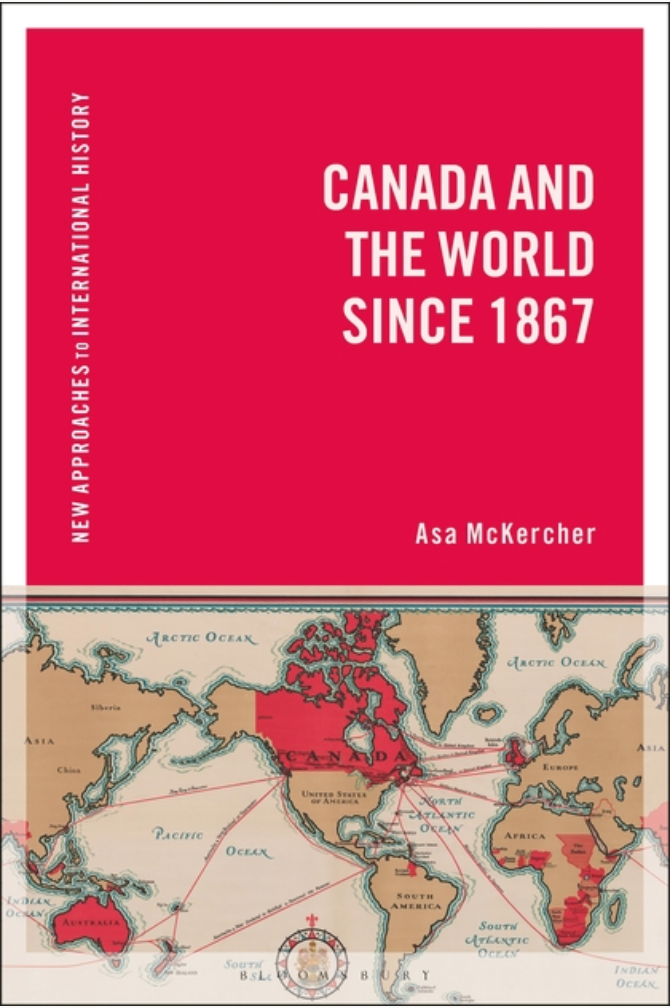
This book is a history of Canada's role in the world as well as the impact of world events on Canada. Starting from the country's quasi-independence from Britain in 1867, its analysis moves through events in Canadian and global history to the present day. Looking at Canada's international relations from the perspective of elite actors and normal people alike, this study draws on original research and the latest work on Canadian international and transnational history to examine Canadians' involvement with a diverse mix of issues, from trade and aid, to war and peace, to human rights and migration.
The book traces four inter-connected themes: independence and growing estrangement from Britain; the longstanding and ongoing tensions created by ever-closer relations with the United States; the huge movement of people from around the world into Canada; and the often overlooked but significant range of Canadian contacts with the non-Western world. With an emphasis on the reciprocal nature of Canada's involvement in world affairs, ultimately it is the first work to blend international and transnational approaches to the history of Canadian international relations.
Howard G. Coombs, "Afghanistan's Lessons : Part I",
Parameters, 49(3), Autumn 2019.
Asa McKercher, “Too Close for Comfort: Canada, the US Civil Rights Movement, and the North American Colo(u)r Line”,
Journal of American History 106, no. 1 (2019): 72-96
Andrew L. Brown "Stepping in New Directions: The Canadian Army’s Observer Program in the Asia-Pacific Region, 1944-45.” Canadian Military History 28, no.1/article 2 (2019), pp. 1-36
In early 1944, and in anticipation of a government decision to commit ground forces to the war against Japan, the Canadian army launched a program that sent officers to the Asia-Pacific region to observe Allied operations. The observer program was well underway when, in November 1944, the Canadian government ordered the army to prepare a division to serve under American command in the Pacific theatre. The observer program helped the army deal with two significant challenges: learning how to fight a largely unfamiliar enemy in a tropical environment, and learning how to operate as part of an American force.
Andrew L. Brown's article on the Canadian Military history's website.
Kevin Brushett "'Trosky in Pinstripes': Lewis Perinbam, CIDA, and the Non-Governmental Organization Program, 1968-1991", in A Samaritan State Revisited. Historical Perspectives on Canadian Foreign Aid, Greg Dpmagju & David Webster (eds.), University of Calgary Press, Calgary, 2019, pp. 163-185.
A Samaritan State Revisitied on the Calgary University Press' website.
Asa McKercher, "Samaritanos canadienses?: Canadian Development Assistance in Latin America during the Trudeau Years" in A Samaritan State Revisited. Historical Perspectives on Canadian Foreign Aid, Greg Dpmagju & David Webster (eds.), University of Calgary Press, Calgary, 2019, pp. 145-162.
A Samaritan State Revisitied on the Calgary University Press' website.
Howard Coombs & Colonel (Ret.) Bernd Horn , ""Is the Juice Worth the Squeeze": Senior Non-Commissioned Officer Perspectives on Risk Management", in Risk & Decision-Making, Colonel (Ret.) Bernd Horn (ed.), Canadian Special Operations Forces Command, Ottawa, 2019, pp. 115-128.
Although senior NCOs have always been the backbone of any army, their importance has grown in the modern battlespace. Operations in the chaotic, complex security environment of today necessitate more than ever the presence of a strong, professional senior NCO corps. The new operating environment is marked by complexity, ambiguity, and an ever present media, as well as nefarious enemies and asymmetric threats. Predictably then, military operations in this environment are enmeshed with risk. Even at the lowest tactical level, actions carried out on the ground are laden with physical, political and strategic risk. As such, senior NCOs are faced with navigating the minefield of risk in everything they do.
Not surprisingly then, risk is a concept with which senior NCOs are very familiar. They not only think continually about risk, but they must also constantly make decisions that weigh the costs and consequences of making decisions and taking action, as well as not taking action. To examine the perspectives of senior NCOs and risk, five very experienced Special Operations Forces (SOF) senior NCOs provided their views vis-à-vis evaluating operational risk. This chapter synthesizes those perceptions.
Capt Arthur Gullachsen, "The Battle of Bretteville l'Orgueilleuse: The Assault of Kampfgruppe Meyer/Wunsche, 8-9 June 1944", in The Last 100 Yards, Col. Paul E. Berg (ed.), Army University Press, Kansas, 2019, pp. 143-168.
The Last 100 Yards on the Army University Press' website.
Asa McKercher and Philip Van Huizen, Undiplomatic History. The Study of Canada and the World, McGill University Press, April 2019
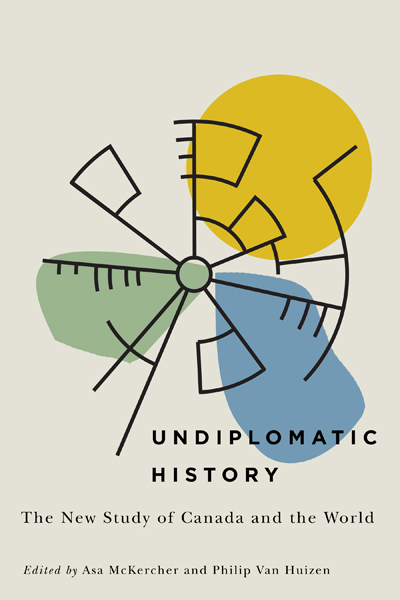
When the field of Canadian history underwent major shifts in the 1990s, international history became marginalized and the focus turned away from foreign affairs. Over the past decade, however, the study of Canada and the world has been revitalized.
Undiplomatic History charts these changes, bringing together leading and emerging historians of Canadian international and transnational relations to take stock of recent developments and to outline the course of future research. Following global trends in the wider historiography, contributors explore new lenses of historical analysis - such as race, gender, political economy, identity, religion, and the environment - and emphasize the relevance of non-state actors, including scientists, athletes, students, and activists. The essays in this volume challenge old ways of thinking and showcase how an exciting new generation of historians are asking novel questions about Canadians' interactions with people and places beyond the country's borders.
From human rights to the environment, and from medical internationalism to transnational feminism, Undiplomatic History maps out a path toward a vibrant and inclusive understanding of what constitutes Canadian foreign policy in an age of global connectivity.
Marie-Michèle Doucet, "Quand les France occupaient la Rhurh. L'opposition des pacifistes françaises à l'occupation de la Ruhr (1923-1925)", Matériaux pour l'histoire de notre temps, N. 129-130, 2, 2019, pp. 48-53.
The French occupation of the Ruhr in 1923 provoked mixed reactions in France, even within internationalist networks. While some applauded it, other feared its repercussion on international opinions. However, a small number of women, belonging to the pacifist movement, will publically oppose the French occupation. For them, humanitarian aid appeared to be the best way to help the children of the Ruhr, but also make their opposition to the actions undertaken by their government known.
Marie-Michèle Doucet's article on the Matériaux pour l'histoire de notre temps's website.
Vanessa S. Oliveira, “Spouses and Commercial Partners: Immigrant Men and Locally Born Women in Luanda 1831-1859,” in Mariana C. Candido e Adam Jones, eds., African Women in the Atlantic World: Property, Vulnerably and Mobility, 1660-1880 (Woodbridge: James Currey, 2019), 217-32.
During the nineteenth century, immigrant males settled along the coast of West Central Africa to trade in slaves and the commodities of the so-called “legitimate” commerce. As was the case in other ports in West Africa, newcomers generally relied on local intermediaries with knowledge of indigenous cultures to establish commercial networks with African suppliers inland. Many cultural brokers were women with whom incoming traders established commercial and, sometimes, intimate relationships. This contribution analyses instances of Catholic marriage between immigrant men and Luso-African women in nineteenth-century Luanda, particularly between 1831 and 1859, a period marked by the ban on slave exports and the expansion of the commerce in tropical commodities in West Central Africa. Although marriage to immigrant men helped advance the career of female traders in previous generations, primary sources demonstrate that in the second half of the nineteenth-century women in Luanda were able to become merchants and acquire wealth out of their relationships with foreign men.
Vanessa Oliveira's chapter on the Boydell and Brewer's website.
Vanessa S. Oliveira, "Donas, pretas livres e escravas em Luanda (Séc. XIX)" (trad. "Donas. Free Black Women, and Enslaved Females in Ninetheenth Century Luanda"), Estudos Ibero-Americanos , vol. 44, n. 3, 2018, pp. 447-456.
Luanda, the capital of the Portuguese colony of Angola, had a female majority in mid-nineteenth century. The female population was composed of donas, free black women, and captives who occupied different spaces in the colonial society. The daughters of the Luso-African elite were since their childhood identified as donas, reflecting their socio-economic status. These women accumulated captives, land, and luxury goods through inheritances and participation in the local and long-distance trade as merchants and brokers. Free black women sought opportunities in retail trade as quitandeiras and offering manual services to the inhabitants of the city. Female captives, in turn, entered the small trade of the streets and markets and performed domestic tasks in the residences of foreigners and Luso-Africans. This study draws on slave registers, baptism and burial records, and deeds of sale and purchase to explore experiences of donas, free black women, and female captives in nineteenth century Luanda. In a Luso-African and slave society, elements such as Portuguese descent, the ownership of goods, and affiliation to the Portuguese culture conferred prestige upon certain individuals determining the trajectories of free and enslaved women.
Vanessa Oliveira's article on Estudos Ibero-Americano's website.
Douglas E. Delaney, Robert C. Engen & Meghan Fitzpatrick, Military Education and the British Empire, UBC Press, September 2018.
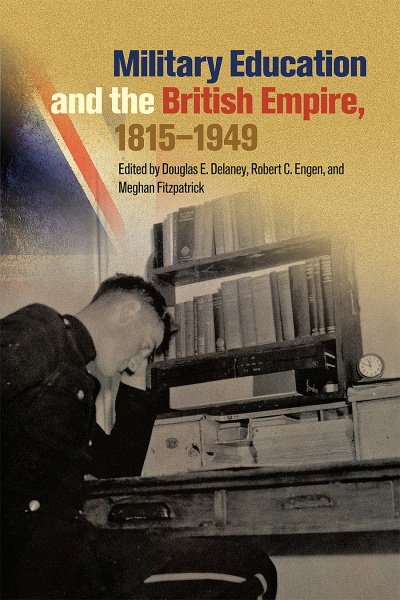
Military education was the lifeblood of the armies, navies, and air forces of the British Empire and an essential ingredient for success in both war and peace. Military Education and the British Empire is the first major scholarly work to address the role of military education in maintaining the empire throughout the nineteenth and twentieth centuries. Bringing together the world’s top scholars on the subject, this book places distinct national narratives – Canadian, Australian, South African, British, and Indian – within a comparative context. Ultimately, this book allows readers to consider the connections between education and empire from a transnational perspective.
Military Education and the British Empire on UBC Press' website.
Sean M. Maloney, Operation Kinetic. Stabilizing Kosovo, Nebraska Press, July 2018
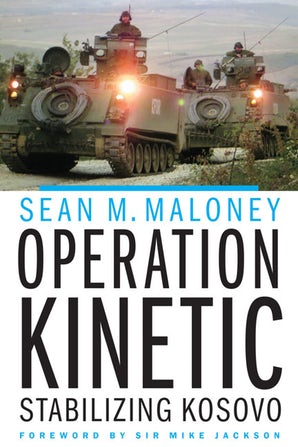
In the late 1990s, NATO led the Kosovo Force (KFOR), charged with stabilizing Kosovo and the former Yugoslav Republic of Macedonia after genocide and other atrocities were carried out in the Balkan region. Operation Kinetic is not only a history of the origins and operations of the Kosovo Force but also a history of the vital operations conducted by the Canadian Army units and their allies assigned to KFOR during the crucial early days and months after entry into the province in 1999 and through 2000.
Operating alongside American, British, French, Norwegian, Finnish, and Swedish forces, these surveillance and response units were instrumental in preventing violence in numerous areas before it could escalate and draw in the Serbian Army, which could have led to further genocide or war in the region. Sean M. Maloney, a Canadian military historian with extensive field experience in the Balkans, draws on numerous interviews and firsthand accounts of an operation that would later serve as a model in preparing for similar efforts in Afghanistan and provide a blueprint for stabilizing operations around the world.
Operation Kinetic. Stabilizing Kosovo on the Nebraska Press' website.
Emanuele Sica & Richard Carrier, Italy and the Second World War. Alternative Perspectives, Brill, June 2018
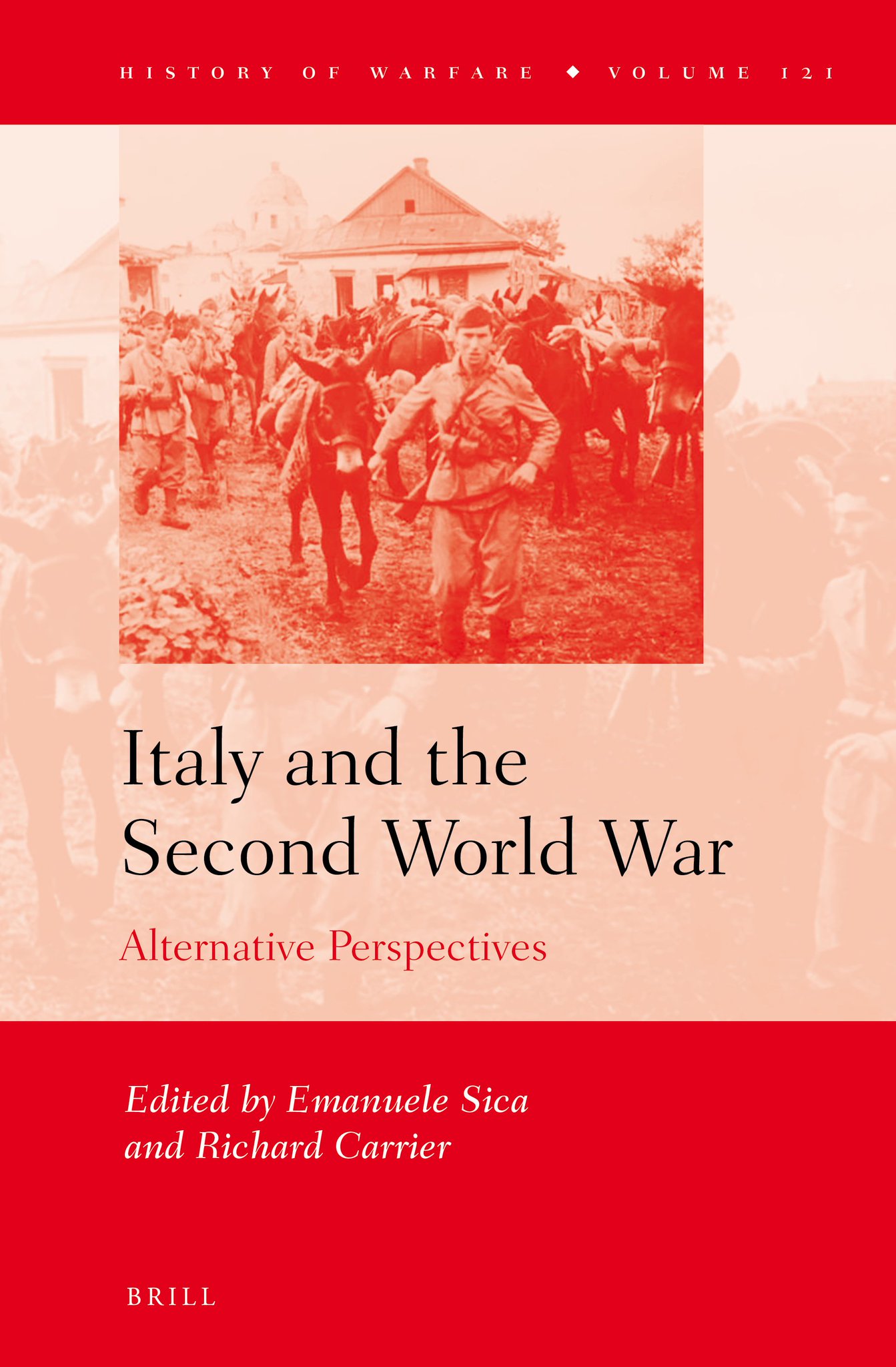
Italy and the Second World War: Alternative Perspectives stems from the necessity to write an important page of Second World War history, by focusing on the Italian war experience, which has been overshadowed in international research by the attention given to its senior Axis partner. Drawing extensively on material from Italian and international archives, a team of Italian and international historians, led by Emanuele Sica and Richard Carrier, offers a broad-ranging volume on the war seen through the lens of Italian soldiers and civilians, and populations occupied by the Italian army.
Italy in the Second World War: Alternative Perspectives on Brill's website.
Howard G. Coombs & Lindsay M. Coombs, "Women of the Caliphate: Fighting for the Narrative" in Countering Transregional Terrorism, ed. Peter McCabe, JSOU University Press, 2018, pp. 89-106
Howard Coombs' article on the JSOU University Press' website.
Marie-Michèle Doucet, "Faire la paix par l’humanitaire. Les pacifistes françaises au secours des enfants d’Allemagne : un premier pas vers un rapprochement franco-allemand (1919-1925)", Cahiers d'histoire, vol. 25, n. 2, Spring 2018.
For French pacifist women, peace after the Great War could only be obtained through Franco-German reconciliation. Without the right to vote unitl the 1940s, these women used humanitarian action as a means of contributing to political life. The creation of the Comité français de secours aux enfants in 1919 and the Action fraternel pour les enfants de la Rurh in 1923 offers them the opportunity to work directly with German children, a task that goes against the public opinion during that period. In this article, Doucet shows that the help provided by the French pacifists to the children of Germany is part of a process called "sortie de guerre". By allowing them to take a political stance, or a least to act symbolically, in favor of Franco-German reconciliation, humanitarianism appears as a means of working concretly towards the establishment of peace.
Marie-Michèle Doucet's article on the Cahiers d'histoire's website.
Douglas E. Delaney, The Imperial Army Project, Oxford University Press, March 2018
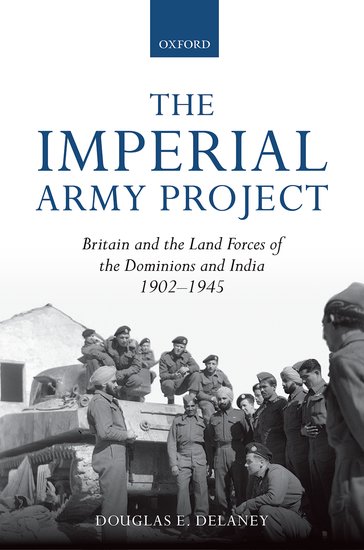
How did British authorities manage to secure the commitment of large dominion and Indian armies that could plan, fight, shoot, communicate, and sustain themselves, in concert with the British Army and with each other, during the era of the two world wars? What did the British want from the dominion and Indian armies and how did they go about trying to get it? Douglas E Delaney seeks to answer these questions to understand whether the imperial army project was successful.
Answering these questions requires a long-term perspective - one that begins with efforts to fix the armies of the British Empire in the aftermath of their desultory performance in South Africa (1899-1903) and follows through to the high point of imperial military cooperation during the Second World War. Based on multi-archival research conducted in six different countries, on four continents, Delaney argues that the military compatibility of the British Empire armies was the product of a deliberate and enduring imperial army project, one that aimed at standardizing and piecing together the armies of the empire, while, at the same time, accommodating the burgeoning autonomy of the dominions and even India. At its core, this book is really about how a military coalition worked.
Douglas Delaney's book on the Oxford University Press' website.
Meghan Fitzpatrick, "The Trouble with Peace: The Royal Army Medical Corps' Cold War Recruitment Conundrums", War & Society, vol. 37, Feb 2018.
This article examines the Royal Army Medical Corps’ (RAMC) recruitment problems throughout the Cold War (1945–1980s). It explores why the RAMC experienced difficulties in attracting new personnel, how the army tried to alleviate these shortages, and the impact of chronic understaffing on the quality of military health care for generations of soldiers and their families. It concludes by reflecting on the enduring dilemmas of recruiting professionals in peacetime.
Meghan Fitzpatrick's article on the War & Society's website.
Arthur Gullachsen, "No Shortage of Tanks!: The Canadian Army's System for the Recovery, Repair and Replacement of A and B Vehicles and Major Weapons Systems", Canadian Military History, vol. 27, Iss. 1, Feb. 2018
This article is an overview of the First Canadian Army in North West Europe’s ability to recover, repair and damaged, destroyed and broken down vehicles and weapons systems. This capability was a crucial factor in maintaining the overall combat power of the Canadian Army Overseas during operations in the last year of war. To support this argument the author examines Canadian wartime primary documents as well as multiple secondary sources.
Arthur Gullachsen's article on the Canadian Military History's website.
Howard Coombs, "21st Century Peace Operations: Assessing Canada's role", New Global Exchange Podcast, Feb. 2018
In this podcast, Howard Coombs discusses the harsh reality of UN peacekeeping and peace support operations in the 21st century. More precisely, he discusses Canada's role in contemporary peacekeeping, the challenges that go along with such a deployment, and Canada's November 2017 announcements that will see an increase of Canadian capabilities dedicated to UN peace support operations.
Howard Coombs' podcast on The Global Exchange's website.
Jean Lamarre, Le mouvement étudiant québécois des années 1960 et ses relations avec le mouvement international, Septentrion, Oct. 2017
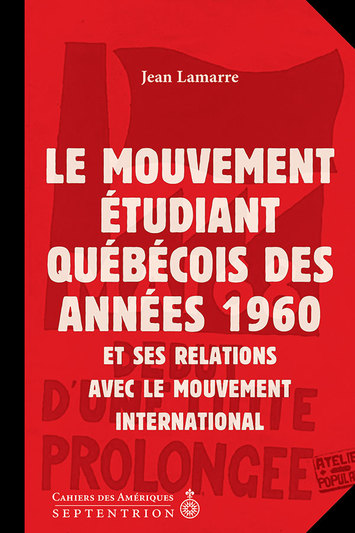
During the 1960s, many protest movements took place around the world. From Paris to Berlin, from Berkeley to Toronto, from New York to Montreal, student youth were at the heart of this social challenge. Students took the streets and led these marches to claim their rights; they organized sit-ins, teach-ins and hunger strikes. All means were good to make their request heard. The similarities in their discours and the use of similar pressur tactics led Jean Lamarre to question the international links that may have existed between these movements.
Jean Lamarre's book on the Septentrion's website.
Marie-Michèle Doucet, "Les femmes pacifistes et les parlementaires français : l’exemple du projet de loi Paul-Boncour de 1927" , Parlement[s], Revue d'histoire politique, n. 26, 2017/2.
On March 7 1927, the French Chamber of Deputies voted a bill that put in place the mobilization during wartime « of all Frenchmen, regardless of age or sex ». Known as the Paul-Boncour Bill, this bill was the first to propose a feminine mobilization in French. Among French pacifist women, the bill provoked strong opposition. To this date, few historians have look at women’s reactions to the Paul-Boncour bill. Yet this is a very interesting moment for women’s pacifism, which gives rise to the use of propaganda methods that are both innovative and original. If these women had previously preferred to work independently from one another, they now recognize the force of collective actions. For the first time since the end of the Great War, the Paul-Boncour bill gives them the opportunity to work together to oppose the French government.
Marie-Michèle Doucet's article on the Parlement(s). Revue d'histoire politique's website.
Howard G. Coombs, "25 Years after Somalia: How it Changed Canadian Armed Forces Preparations for Operations", Canadian military Journal, vol. 17, n. 4, Automn 2017.
In late-1992, the Canadian Airborne Regiment Battle Group deployed to Somalia, during which time a series of negative incidents took place. These events far overshadowed any of the successes attained by the Battle Group in fulfilling their mandate. The best known of these undesirable happenings occurred in 1993 while the Regiment was based around the town of Belet Huen. The situation was desperate among the civil population in that area. There had been many attempted thefts from the Canadian camps, and orders were given to apprehend, and in some cases, to abuse intruders. Subsequently, on 16 March, one such intruder was captured, tortured, and murdered by Canadian soldiers. This killing of Somalian teenager Shidane Arone sent shock waves throughout Canada, and resulted in not only the punishment of the perpetrators, but also to the still-debated disbandment of the Canadian Airborne Regiment.
Howard G. Coombs' article on the Canadian military Journal's website.
Asa McKercher and Galan Roger Perras, Mike's World: Lester B. Pearson and Canadian External Affairs, UBC Press, oct. 2017
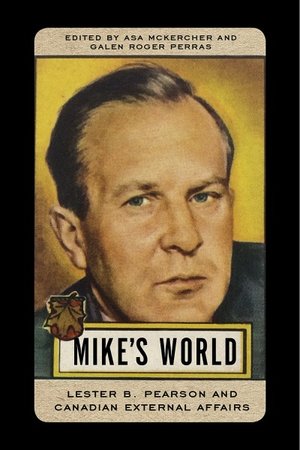
Mike’s World explores the myths surrounding Pearsonianism to explain why he remains such a touchstone for understanding Canadian foreign policy. In it, leading and emerging scholars dig deeply into Pearson’s diplomatic and political career, especially during the 1960s and his time as prime minister. Topics range from peacekeeping and Arctic sovereignty to environmental diplomacy and human rights policy. Chapters also explore Canada’s relations with South Asia, the Middle East, Europe, and the Americas. They show that competing forces of idealism and pragmatism were key drivers of Pearsonian foreign policy, and how global events often influenced politics and society within Canada itself.
Mike's World on the UBC Press website.
Meghan Fitzpatrick, Invisible Scars. Mental Trauma and the Korean War, UBC Press, Aug. 2017.
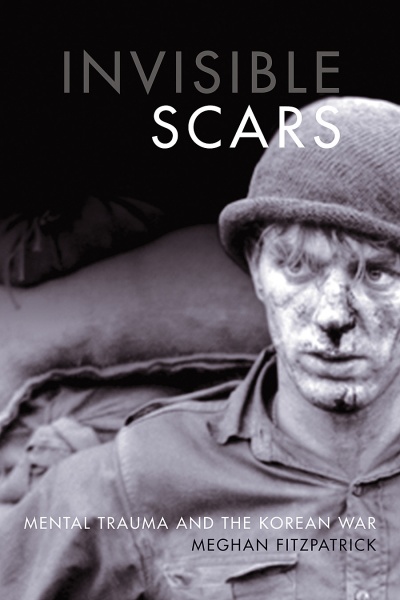
This book offers an intimate look into the history of psychological trauma and assesses the impact of the Korean War on the development of military psychiatry. In addition, it engages with current disability, pensions, and compensation issues that remain hotly contested and reflects on the power of commemoration in the healing process.
Inivisible Scars on the UBC press website.
Col. Howard G. Coombs, "A Uniquely Canadian military moment: Sam Hughes and the No. 7 General Hospital, 1915-1916", Canadian Journal of Surgery - Journal canadien de chirurgie, 60(4), 2017.
Universities across Canada actively supported the call to arms in 1914, and Queen’s University in Kingston, Ontario, was no different. Though a myriad of units composed of Queen’s faculty and students were created, the university perceived the military hospital raised by the school’s medical faculty to be among its most vital contributions to the First World War. This commentary describes the engagement of the No. 7 General Hospital with the Minister of Militia, Sam Hughes, which has become an almost unknown footnote to its illustrious story.
Turning Point 1917. The British Empire at War, edited by Douglas E. Delaney and Nikolas Gardner, UBC Press, Feb. 2017.
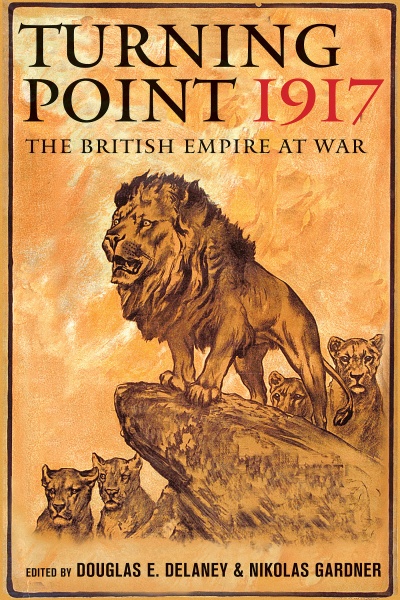
Turning Point 1917 examines the British imperial war effort during the most pivotal and dynamic twelve months of the Great War. Written by internationally recognized historians from Canada, Australia, New Zealand, and the United Kingdom, its chapters explore military, diplomatic, and domestic aspects of how the empire prosecuted the war. Their rich, nuanced analysis transcends narrow, national viewpoints of the conflict to examine the British Empire as a coalition rather than individual states engaged in their own distinctive struggles.
Turning Point 1917 on the UBC Press website.
Le génocide des arméniens: représentations, traces, mémoires, edited by Marie-Michèle Doucet, Joceline Chabot, Sylvia Kasparian and Jean-François Thibauld, Presses de l'Université Laval, Feb. 2017.
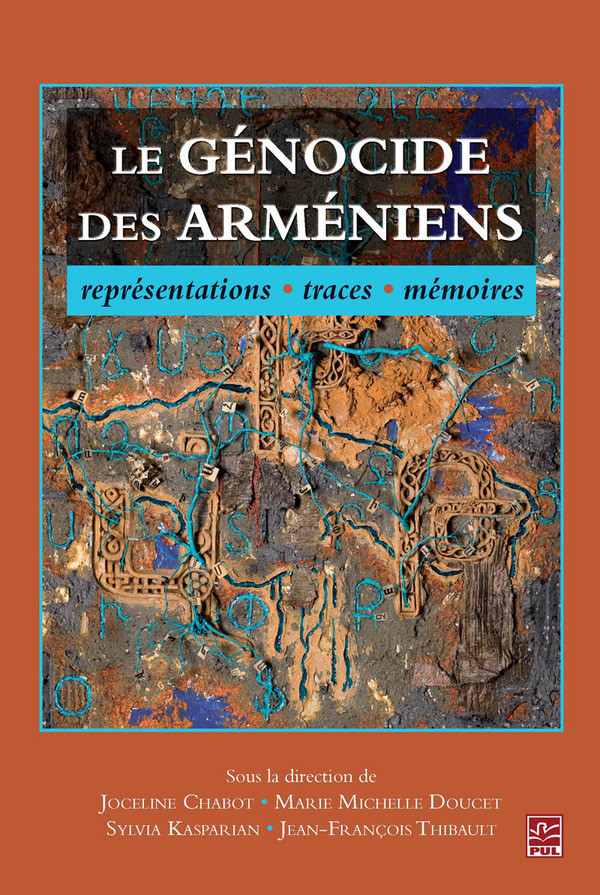
This book, which brings together international scholars, explores the new perspectives in the history of the Armenian genocide. The different chapters are grouped around three main axes: respresentations, traces and memories. By focusing on a multidsiciplinary approach, it highlights the structuring aspects of the recent debates about the Armenian genocide.
Le génocide arménien on the Presses de l'Université Laval's website.
La guerre de 1812. Deuxième Dossier: Patriotisme et économie durant les rébellions de 1837-1838, edited by Roch Legault and Jean-Noël Grandhomme, Bulletin d'histoire politique, VLB éditeur, January 2017.
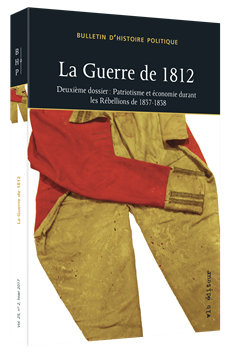
The last armed conflict to take place in Quebec, the War of 1812, the unknown, has been discussed in Canada since its bicentennial. This issue of the BHP offers new perspectives on the scholarly history of the confrontation and its place in the collective memory, in addition to take stock of the research that has been done up to this point.
La guerre de 1812 on the VLB éditeur's website.
Arthur Gullachsen, "Destroying the Panthers: The Effect of Allied Combat Action on I./SS Panzer Regiment 12 in Normandy, 1944", Canadian Military History, Vol. 25, Iss. 2, Article 13, 2016
This article is an examination of the operational record of the World War Two German Panther tank during the Normandy Campaign of summer 1944. Challenging its perception as mechanically unreliable, this article argues Allied combat action was responsible for a large percentage of Panthers that were out of action. Secondly, the inferior resources of the German tank replacement and repair program were no match for superior Canadian Army practices during 1944. To support these arguments the author examines Canadian and German wartime primary documents as well as multiple secondary sources.
Arthur Gullachsen's article on the Canadian Military History's website
Emmanuele Sica, Mussolini's Army in the French Riviera. Italy's Occupation of France, University of Illinois Press, 2016
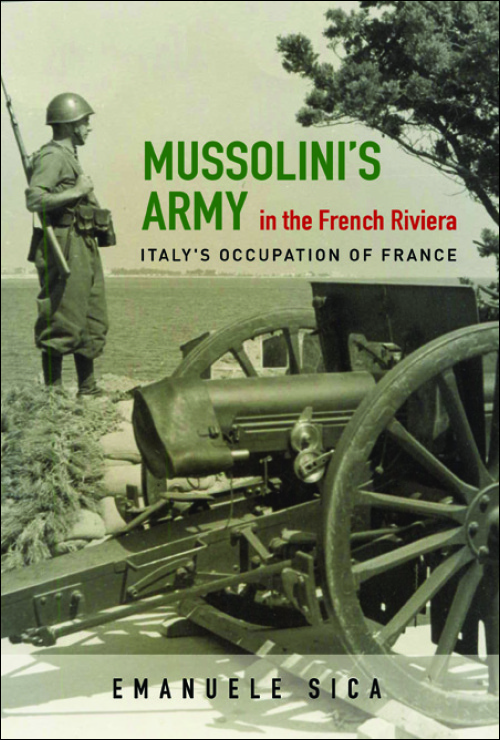
Employing a multi-tiered approach, Emanuele Sica examines the simultaneously conflicting and symbiotic relationship between the French population and Italian soldiers. At the grassroots level, Sica asserts that the cultural proximity between the soldiers and the local population, one-quarter of which was Italian, smoothed the sharp angles of miscommunication and cultural faux-pas at a time of great uncertainty. At the same time, it encouraged a laxness in discipline that manifested as fraternization and black marketeering. Sica's examination of political tensions highlights how French prefects and mayors fought to keep the tatters of sovereignty in the face of military occupation. In addition, he reveals the tense relationship between Fascist civilian authorities eager to fulfil imperial dreams of annexation and army leaders desperate to prevent any action that might provoke French insurrection. Finally, he completes the tableau with detailed accounts of how food shortages and French Resistance attacks brought sterner Italian methods, why the Fascists' attempted "Italianization" of the French border city of Menton failed, and the ways the occupation zone became an unlikely haven for Jews.
Mussolini's Armny in the French Riviera on the Univeristy of Illinois Press' website.